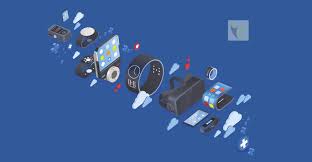 The watch changed the landscape for wearables. Since the introduction of the Apple Watch in 2014 and its subsequent sales of more than 33 million (as of 2020), Apple has been the dominant player in the US market. For the market of technology for older adults, it offered a smartwatch with built-in fall detection and other numerous health features, which it continues to introduce. By 2020, it became one of Apple’s 5 most profitable businesses and reached total adoption of 100 million globally. It changed many dimensions of life, including making people look and feel cool, reinforcing healthy behaviors -- including the importance of standing up when it notices you've been sitting too long. It made people want to track health variables they never thought they would track -- like heart rate variability, blood oxygen levels, or hand washing frequency and duration.
The watch changed the landscape for wearables. Since the introduction of the Apple Watch in 2014 and its subsequent sales of more than 33 million (as of 2020), Apple has been the dominant player in the US market. For the market of technology for older adults, it offered a smartwatch with built-in fall detection and other numerous health features, which it continues to introduce. By 2020, it became one of Apple’s 5 most profitable businesses and reached total adoption of 100 million globally. It changed many dimensions of life, including making people look and feel cool, reinforcing healthy behaviors -- including the importance of standing up when it notices you've been sitting too long. It made people want to track health variables they never thought they would track -- like heart rate variability, blood oxygen levels, or hand washing frequency and duration.
…Upending the Personal Emergency Response System (PERS) landscape. For the older adult segment, the Apple watch validated the prospects of a wrist worn mobile PERS device market – enticing legacy firms to jump in when they had had only a more obtrusive pendant device. Today, with the older demographic, currently 54 million in the US, it seems that the $1 billion market, now 30% for mobile use, shows no sign of slowing down, with both old and new form factors and devices.
Beyond PERS – enter the Internet of Behavior (IoB). Today’s wearables market for older adults includes smart watches and necklaces, fall detection wearables (with or without watch faces) and related apps, fitness devices, smart clothing, hearables, dementia tracking, and health monitoring. Many of the offerings now include voice interfaces and some have introduced AI features to collect behavior data about the wearer. Gartner refers to a this category as the Internet of Behavior (IoB), adjacent to Internet of Things (IoT). The data collected from wearables can be used for personalization, upselling new products or services, and it also has the potential for predicting future behaviors or track changes over time.
What is the IoB potential market for seniors? The opportunity for wearables (outside of PERS) has barely begun to show signs of penetrating the older adult technology sector. According to AARP’s 2020 research report, 16% of the 60-69 age group and 11 percent of the 70+ own a wearable, presumably a smart watch. But the market of wearables holds potential for older adults who are intent on maintaining or improving their fitness and wellbeing, as well as monitoring older adults as they become frailer or in need of assistance. And connecting these devices could be useful to senior living organizations trying to differentiate based on their technology services. Do tech and service vendors, senior living firms, families and older adults see the potential?
[This is the first blog post prior to a new report project -- the Future of Wearables and Older Adults 2021 -- launching soon for completion later in the year.]

 The watch changed the landscape for wearables.
The watch changed the landscape for wearables.